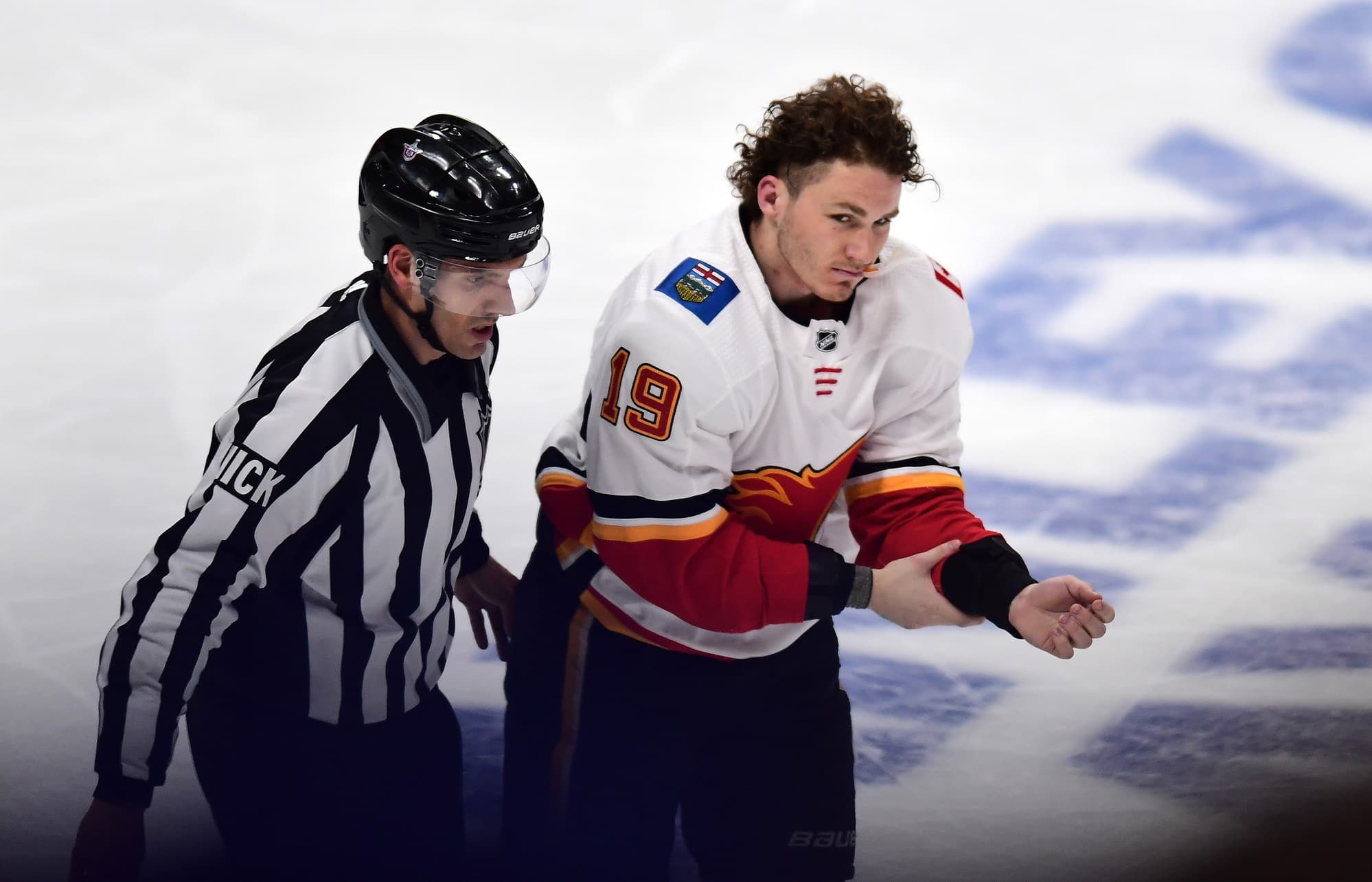Signing Matthew Tkachuk before the draft allows Brad Treliving to make big moves

By Ryan Pike
4 years agoThe off-season is a time for National Hockey League teams to overhaul their rosters. Due to the salary cap complicating in-season tweaks, the biggest moves are often made at the annual NHL Draft and via free agency.
The Flames’ biggest off-season piece of business is a new contract for pending restricted free agent Matthew Tkachuk. With a few other things on the docket, other significant moves will likely be held up until Tkachuk is signed.
It seemingly puts a bit of time pressure on the deal, since during his time as Flames general manager Brad Treliving’s avowed philosophy has been to “build [his] team during the summer.”
Here’s a quick summary of the major moves that Treliving has made either at the NHL Draft or in the first day (or two) of free agency:
- 2014: signed Jonas Hiller, Mason Raymond and Deryk Engelland
- 2015: traded for Dougie Hamilton; signed Michael Frolik
- 2016: traded for Brian Elliott; signed Chad Johnson and Troy Brouwer
- 2017: traded for Travis Hamonic
- 2018: traded for Elias Lindholm and Noah Hanifin; signed James Neal, Austin Czarnik and Derek Ryan
The draft and July 1 work well for retooling an NHL club for three big logistical reasons:
All of the 31 NHL clubs are in the same place at the same time. Several of Treliving’s draft weekend swaps were finalized from earlier chats via him tracking down the other GM on the draft floor and working out the mechanics then and there. A GM can figure out the trade market in a hurry, figure out fair value, and get a trade from concept to execution pretty rapidly on draft weekend due to sheer proximity.
Similarly, with the advent of the courting period, player agents now congregate in the draft city to have chats with GMs looking to add their pending free agent clients. It’s just as easy for both the agents and GMs to figure out the lay of the land in the free agent market and facilitate rapid signings on July 1.
The other big factor that leads to off-season moves is that teams are allowed to exceed the cap over the off-season – defined as between July 1 and the beginning of the regular season. Things may be tight up until then, but the temporary increase of the cap ceiling often leads to a flurry of moves as additional money is artificially injected into the cap system.
Here’s the gist of the situation: the Flames can have up to $91.3 million of deals on the books up until the 2019-20 season begins. But given that the projected cap for the upcoming season is roughly $83 million, they’ll need to have a plan for getting under that ceiling.
As we detailed a week ago, the Flames’ cap situation isn’t entirely sunny. They have $65.4 million allocated to nine forwards and six defensemen, which leaves them $17.6 million to re-sign Tkachuk, Sam Bennett, Andrew Mangiapane, David Rittich… and figure out four more roster spots, including another goalie. With so little cap wiggle room, how can Treliving do much more than tinkering around the fringes of his roster without knowing how much cap space Tkachuk will eat up?
The Flames probably don’t need to make seismic changes to a roster that finished second overall, but they’re going to make off-season changes because that’s what NHL teams do. If Treliving wants the ability to make one of his habitual big swings at the NHL Draft or during free agency, he’ll need to get a deal done with Tkachuk before he heads to Vancouver for the draft.
Recent articles from Ryan Pike





